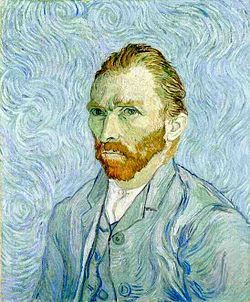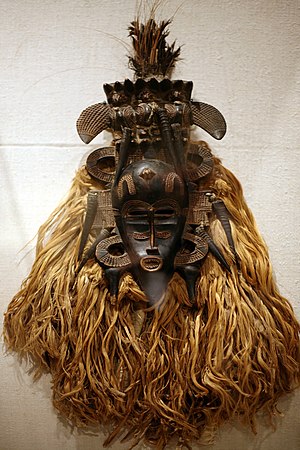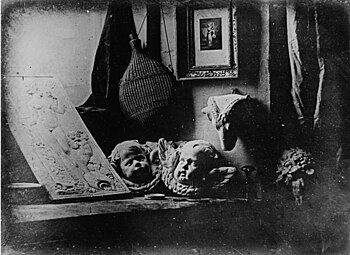The element of texture
From WikiEducator
| Art Appreciation and Techniques (#ART100) | |
|---|---|
| The visual language: Artistic elements | Overview | Introduction | Point | Line | Shape | Mass | Space | Value or tone | Color | Texture | Summary |

Vincent van Gogh, Self Portrait, 1889, oil on canvas, <a href="http://www.musee-orsay.fr/en/home.html">Musee d'Orsay</a>, Paris.
- actual, the real surface qualities we perceive by running a hand over on object, and
- visual, an implied sense of texture created by the artist through the manipulation of their materials.
An artwork can include many different visual textures but still feel smooth to the touch. Robert Rauschenberg’s mixed media print Skyway includes rough and smooth visual textures that add layers of perception and animate the work, drawing attention to specific areas within it. A self-portrait by Vincent van Gogh swirls with actual textures created with brushstrokes loaded with paint. The artist fixes his gaze sternly at the viewer, his spiky red beard and flowing hair rendered so texturally you want to reach out and touch them.

Senufo peoples, Face Mask (Kpeliye'e), wood, horns, raffia fiber, cotton cloth, feather, metal, sacrificial material, <a href="http://www.metmuseum.org/Collections/search-the-collections/50003530">The Metropolitan Museum of Art</a>, New York City
